This article may contain affiliate links. When you purchase something we recommend, we make a small commission. You don’t pay anything extra. 💘 For more details, check out our Terms of Use page.
I will tell you a word and you will tell me what you think.
Mangoes.
Love them? Hate them?
Don’t have an opinion on them?
It doesn’t matter because if you find yourself in any one of the over 7,000 islands of the Philippines you will need to make a decision. This tropical land is blessed with rich soil and a climate that offers an abundance of sunshine, humidity, and rainfall.
One of the largest producers and exporters of tropical fruits, including mango, banana, papaya, and pineapple among others, the Philippines is where any sweet-tasting, fruit-loving person should find themselves. Every time I visit the Philippines, I get to try new fruits I didn’t even know existed.
Here is a short list of a few of my favorite fruits in the Philippines.
The "Chico"
Introduced to the Philippines during the Spanish colonization period ( 1521 – 1898 ) this potatoey-looking fruit is a native of Central America and Mexico but is now produced in large quantities across Malaysia, Indonesia, India, Pakistan, and the Philippines.
It goes by many names such as sapodilla, zapote, níspero, or mispel.
It has an earthy clay-like color and resembles a small potato in feel and texture. The best thing about trying new flavors is you have no idea about what you are about to taste. For Chico, I was given this description.
“it’s like a mad apple”
” It tastes like when you are drunk”
Well, it was pretty spot on.
The flesh has a grainy texture, a mixture of clumpy pumpkin pie, apple pie, and mud that has a faint sweet alcoholic smell. To eat, simply squeeze and it will open in half. There are a handful of seeds in each fruit all mesmerizingly shiny and smooth with a small hook on one end that could become a choking hazard!
It is commonly used in jam, ice-cream or yoghurt.
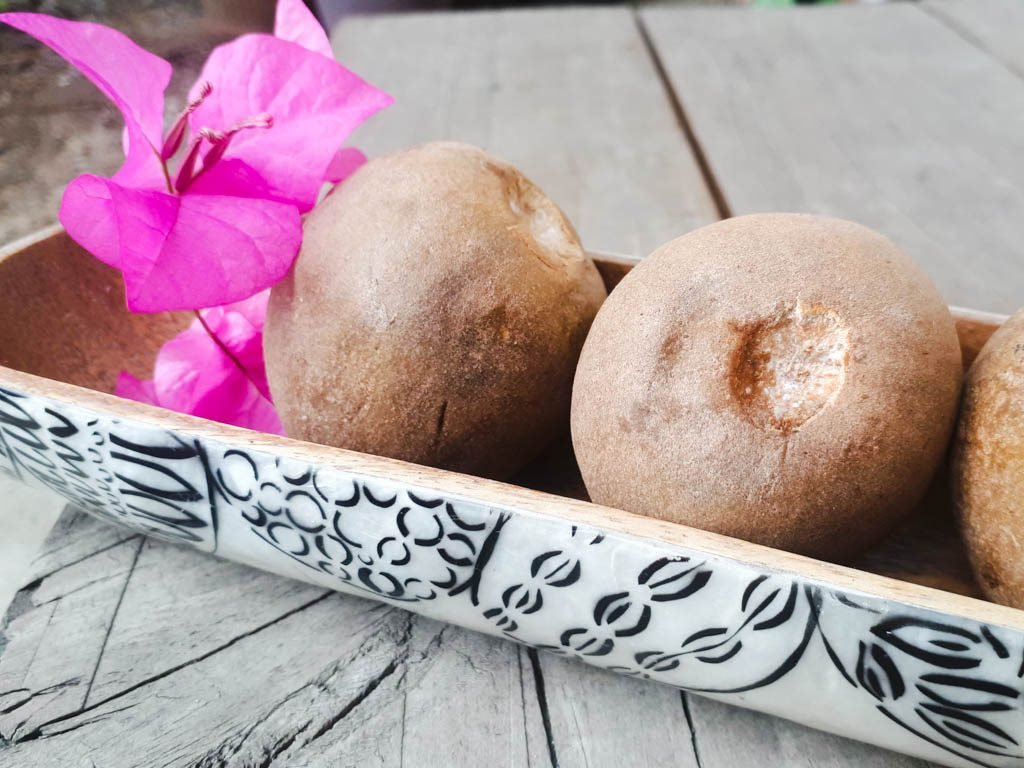
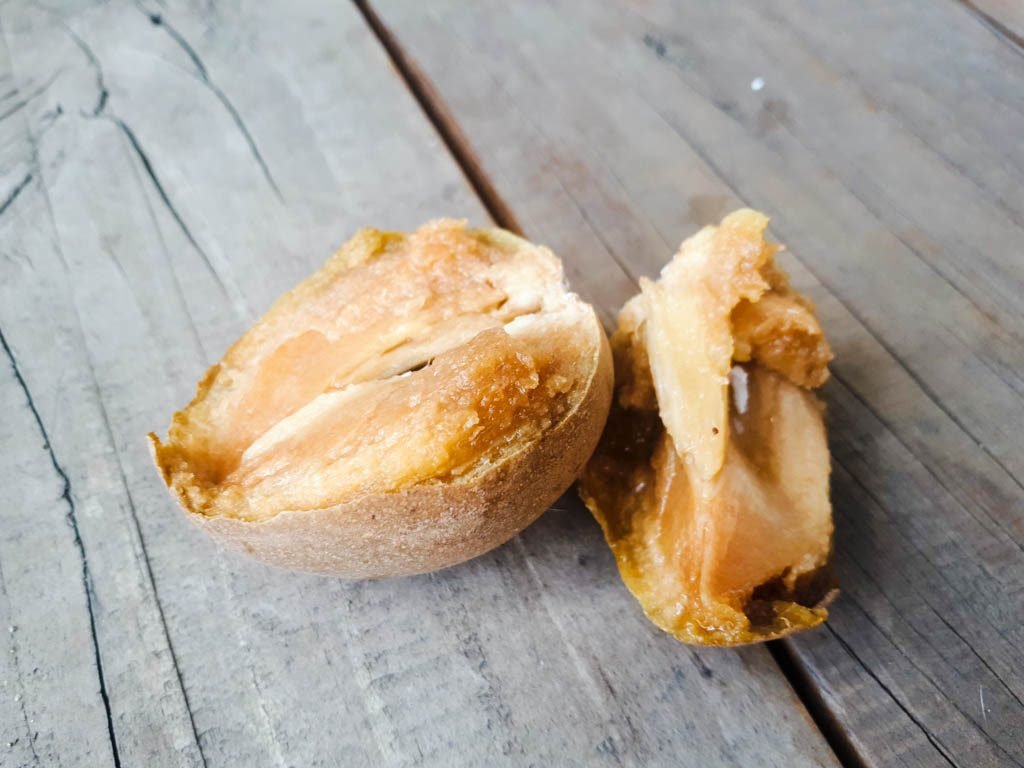
The Lansones or lanzones
Another fruit that looks like a potato. Looks can be very deceiving.
This one is smaller and only grows to the size of a kiwifruit.
It also grows in grape-like clusters, the smallest ones are usually the sweetest.
Lanzones, originate from Western Malaysia where it is known as langsat.
Production can be profitable but slow, with new trees needing 10-12 years or more to bear fruit.
Once you squeeze it open you will reveal a gelatinous pack that carries a juicy and sweet-tasting fruit. The seeds are crunchy and can taste sour.
Lanzones are incredibly rich in minerals, vitamins, and nutrients and are used for their medicinal and anti-inflammatory properties.
They are usually in season from August to December.
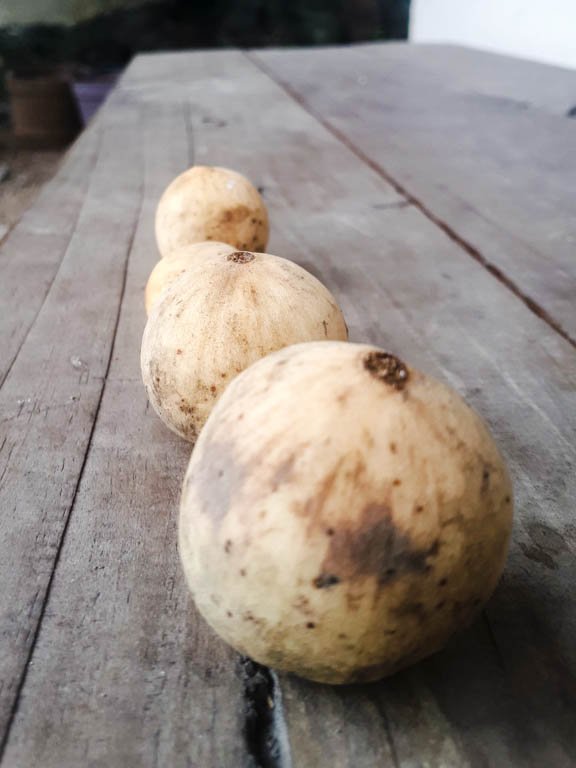
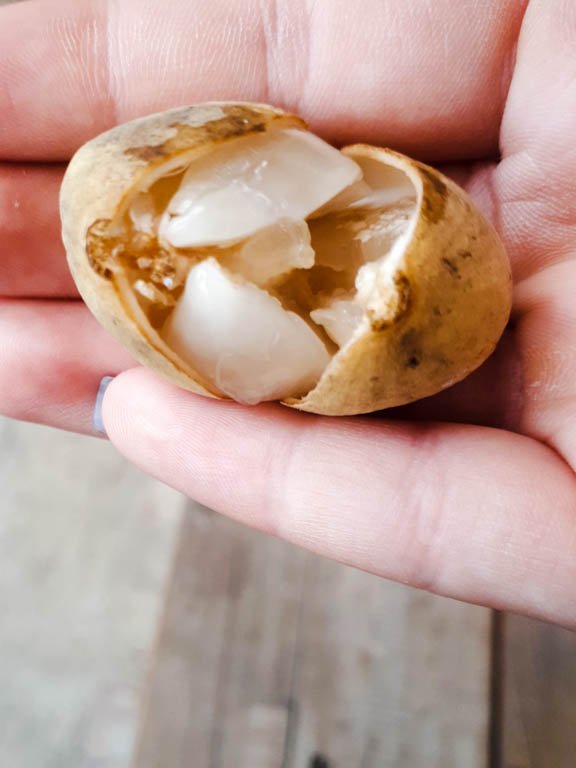
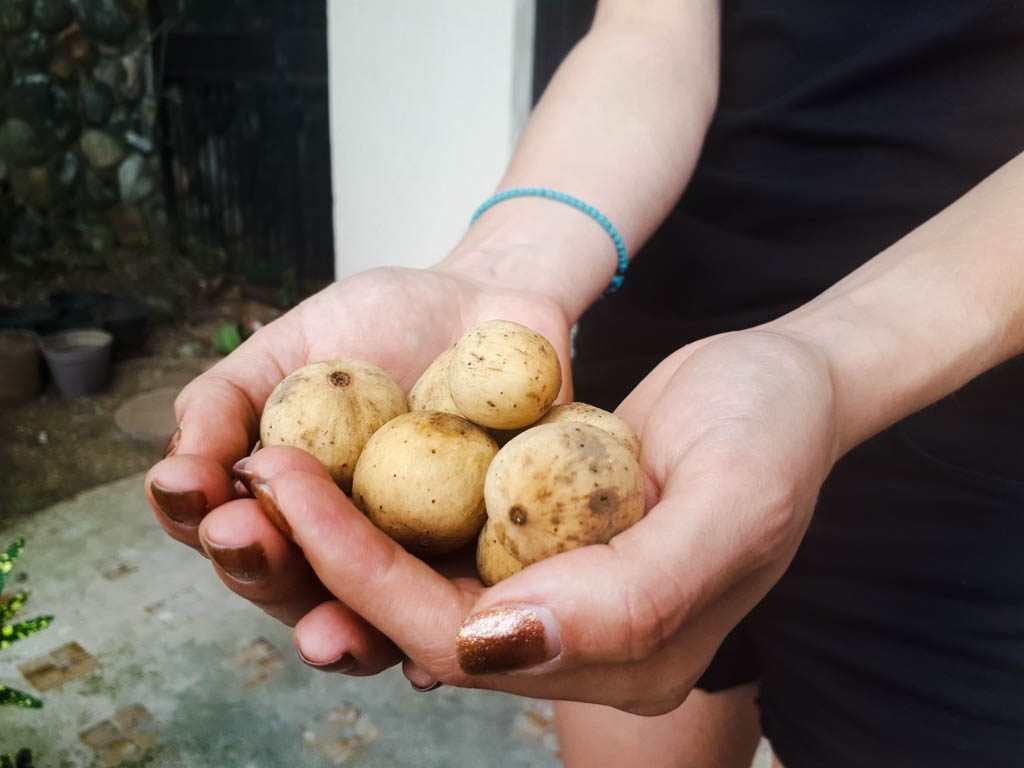
The Longan
A relative of lychees, longan found its way from the mountains of Myanmar and Southern China to the islands of the Philippines, most probably through the establishment of trade routes and the immigration of Chinese workers.
Relatively unknown outside of China for many years, the history of the fruit can be traced all the way back to the Han Dynasty in 200 BC. A bark-like shell can be peeled off to reveal a small gelatinous bulb.
Eat around the fruit to find the shiny black seed.
Fruit picking, even nowadays, tends to be done primarily by hand, with every effort taken to keep the fruit attached to the branches, preserving their freshness.
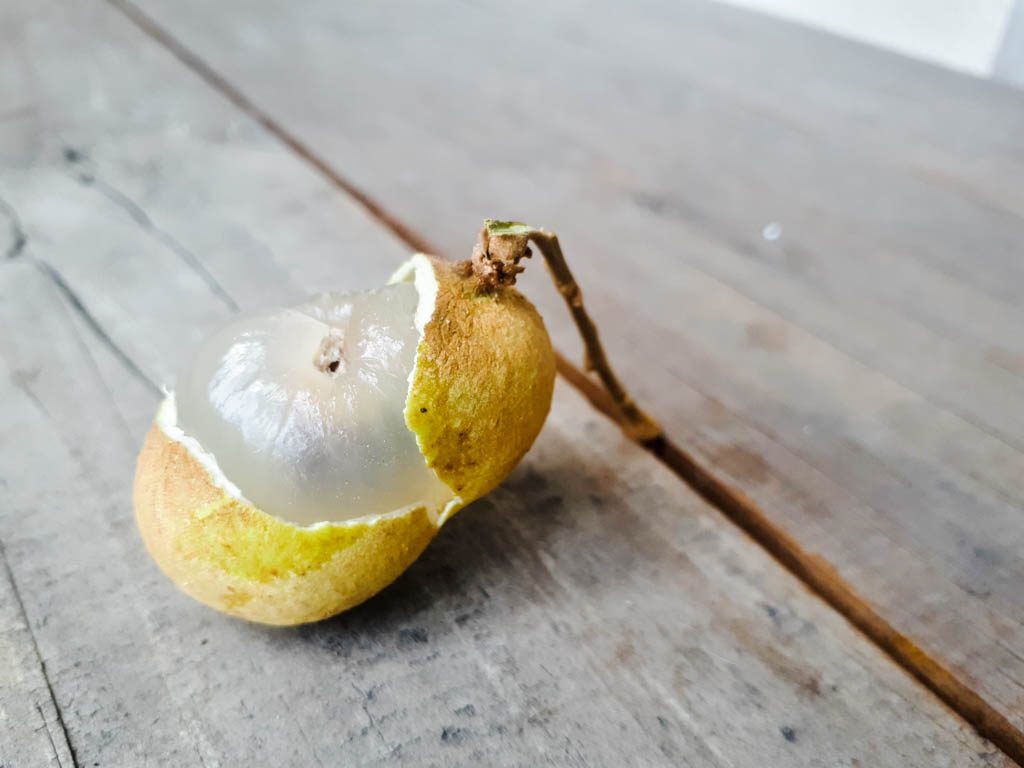
The Mango (also known as Mangaa)
The king of all Filipino fruits, the national fruit of the country, and favorite addition to cooking.
Chutneys, jams, stews, ice-creams, sherbet, or smoothies are fair choices.
Whether you like it in your soup Senegal, your salad, or accompanying your fish with onion and tomatoes, you are in luck. But not all mangoes are created equally and when you find yourself in the Philippines, one of the most important questions when shopping for mangoes, is where they came from.
Guimaras is a small island province, mango capital of the Philippines, and treasured worldwide. The produce of Guimaras is mostly exported while importing mangoes into the island is strictly prohibited. The island also has a research institute dedicated to the study of the local mangoes and uses its treasured product in a variety of recipes including mango pizza, mango ketchup, and mango desserts.
Zambales is another variety of Filipino mango, that has been voted sweetest mango worldwide and was added to the Guinness Book of World Records in 1995. If that doesn’t prove how important mangoes are to the local community, the annual Dinamulag Festival, celebrating bountiful harvests, should surely do.
Mangoes from Guimaras tend to be characterized by their circular shape, while Zambales are differentiated by their longer body.
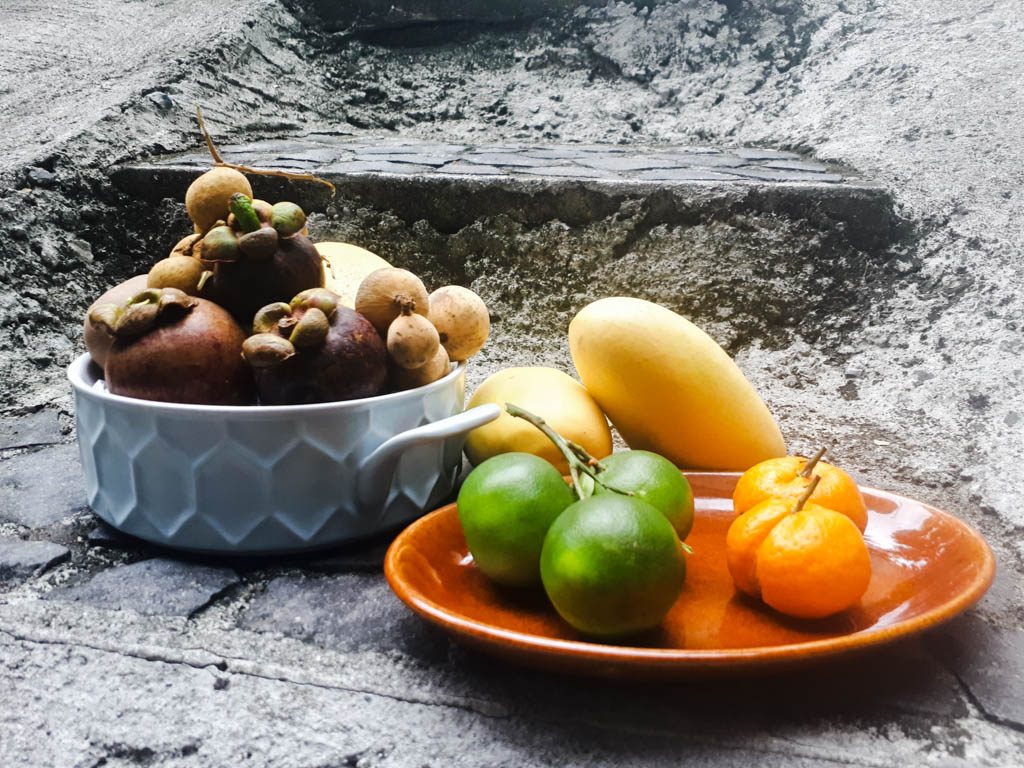
The Mangosteen
This vibrant little fruit has been nicknamed the Queen of fruits, for its antioxidant properties and shape, that resembles that of a crown once cracked open.
Mangosteen can be reddish, brown, or purple on the outside with a greenish stem that resembles that of a bell pepper.
- Snap the top off to create an opening, since the skin by itself is hard to pierce and peel.
Once the top is off, squeeze or crack in half. A luscious red color will be revealed inside, with small pieces of white fruit. They look more like miniature garlic cloves and have a pleasantly sour taste. The bigger ones have seeds in the middle, the smaller pieces tend to be seed-free.
Mangosteen is made into vitamins, tea, and other supplements.
It’s also used as a healthier alternative to coffee and is made by boiling the rind and mixing it with cinnamon or other spices for taste.
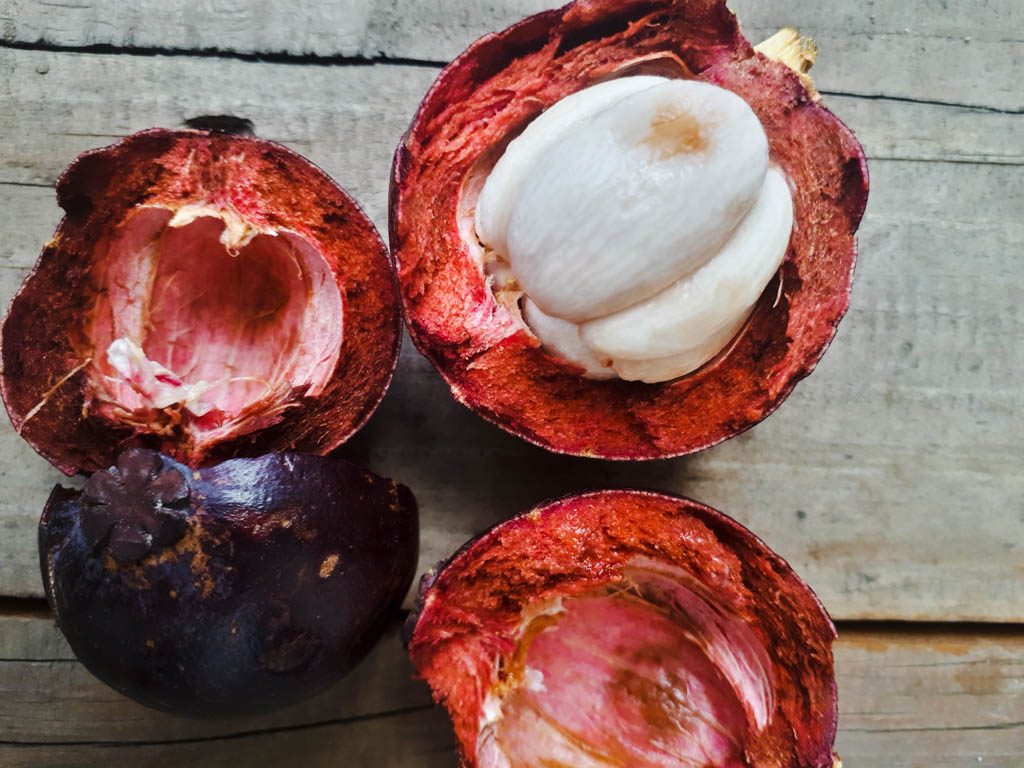
Other Fruits in the Philippines Worth Mentioning
Pineapple
The Philippines is the second-largest in the production and export of pineapples, ands the perfect climate for the cultivation of this fruit. Most of the pineapples are grown in Mindanao, the second-largest island.
However, if you find yourself in the area around Tagaytay, a couple of hours south of Manila, look out for the fields of prickly pineapples that surround you. They are everywhere!
Dalanghita – Dalandan – Kiat Kiat
Dalaghita is a variety of the citrus fruit family that is native to the Philippines.
The name comes from Spanish influence, the word “naranjita” meaning small orange. Dalanghita’s have a bright green skin and are almost identical to Dalandan, a similar green coloured citrus family belonging type of fruit.
The differences between the two, subtle. Apparently, it is confusing to everyone including locals.
One is better for marmalade, the other better for juice. I honestly could not tell which one I tried. Maybe both. It will remain a mystery.
I do know that it was sour. The kind of sour you cannot hold yourself back from making funny expressions. Like a baby tasting a lemon for the first time, tongue moving back and forth, mouth open, eyes squinting from the sour taste hitting your brain.
Kiat kiat is like the Filipino version of a mandarin or small orange. They are incredibly sweet, easy to peel, said to bring good luck, and are the perfect thing to eat after a dalanghita.
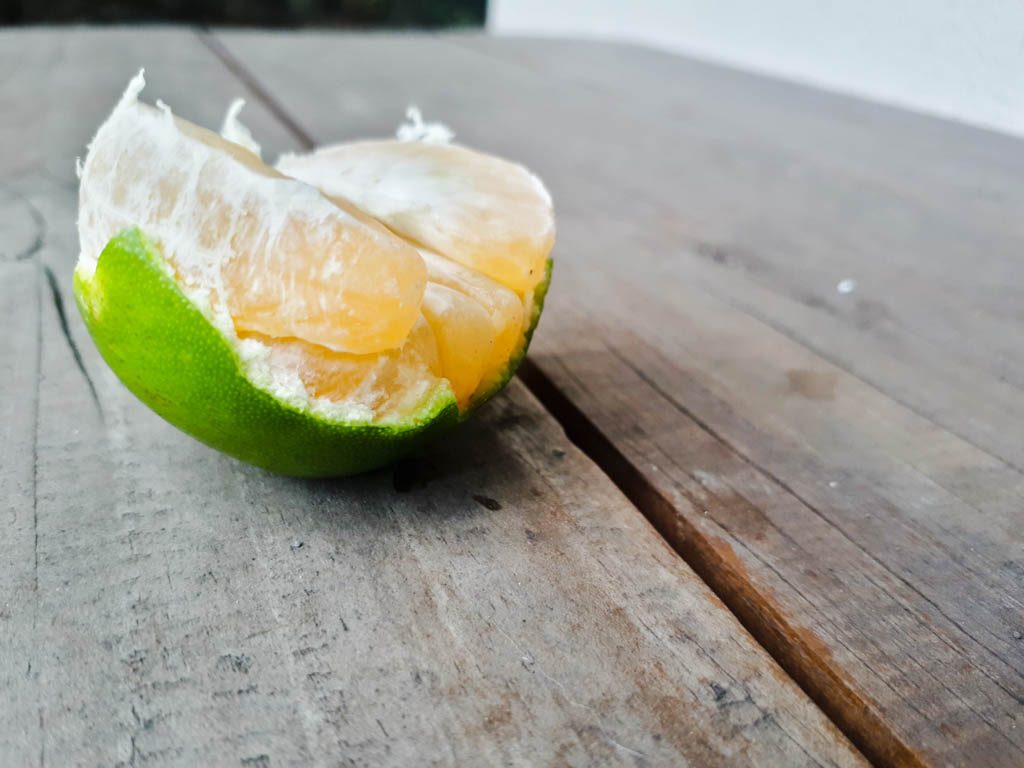
ESSENTIAL INFORMATION
Must Know When Visiting Philippines
- Emergency: Dial 911 for all emergencies. Police: 117. Fire: 160.
- Language: English is widely spoken in most tourist areas. There are more than 100 different languages, with Tagalog and Cebuano being the most commonly spoken. Learn a few words like, “Salamat” (Thank you), “Mabuhay”, (Hello).
- Water: Tap water is safe in Metropolitan Manila but bottled water is best for other areas.
- Driving: Right-hand side, international driving permit recommended. Book your rental car with Discover Cars for best rates and comparisons across all major companies.
- Accommodation: Booking.com for the most options on hotels, apartments and hostels. Free cancellation in a lot of places and no need to pre-pay. Great for their rewards points system.
- Islands: There are a LOT of islands, spread out around the country. Start with a map or ferry service to get an idea of travel times. Ferry Scanner is the best for ferry bookings to the Greek islands.
- Activities: From cultural sights to day trips, food tours and city guides, use Get Your Guide. Another option very popular in Asia is Klook. Customer service can be tricky but there are more options.
- Public Transport: Options for public transportation are buses, jeepneys, and the MRT. Not recommended as the main way of transportation. But great if you want to have the “experience”.
- Domestic Airlines: The main airlines for airtravel are Philippines Airlines, AirAsia, Cebu Pacific.
- Taxi: Always use a taxi app, instead of flagging down a taxi from the road. Most popular option is Grab.
- Culture: The Philippines has a tipping culture. While there are no strict guidelines, a 10% gratuity is normal for most eating establishments. Do check cause some places will automatically add a service charge.


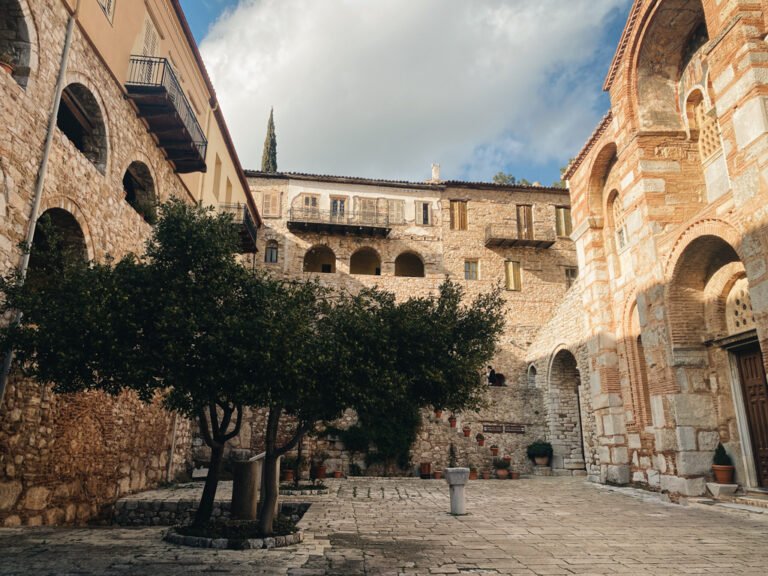


[…] One of my most viewed posts in the blog, that also surprised me, is Around The Philippines: Fruit Edition. The Philippines is a county I have been lucky to visit about 5 times, to see my family when […]